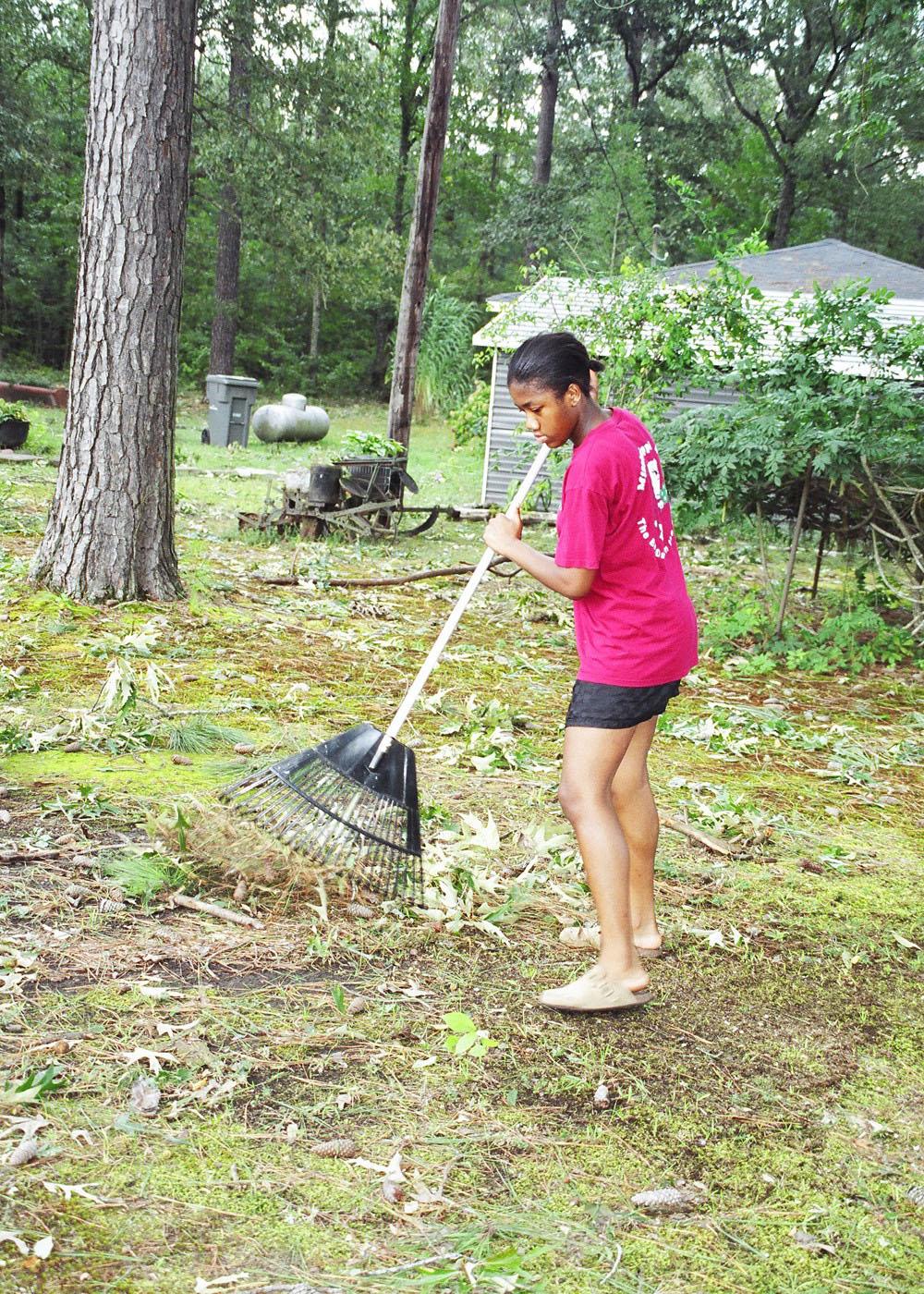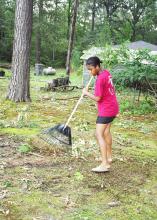Information Possibly Outdated
The information presented on this page was originally released on September 1, 2005. It may not be outdated, but please search our site for more current information. If you plan to quote or reference this information in a publication, please check with the Extension specialist or author before proceeding.
Include landscapes in storm recovery
By Norman Winter
MSU Horticulturist
Central Mississippi Research & Extension Center
Knowing you live in an area at risk for hurricane damage is one thing, but watching a Catagory 4 or 5 hurricane barrel down on your home is a helpless feeling. When the time for recovery arrives, cleaning up landscapes can seem overwhelming, especially if a lot of trees are down. What took a few hours to bring down, may take weeks to clean up.
First and foremost, take care of any damaged trees that could fall or break. Hire trained professionals to deal with these damaged trees to avoid, or at least minimize, further damage.
You may be wondering about the possibilities of standing trees back up. To be perfectly honest, only smaller trees and shrubs are good candidates. These will need to be anchored by two or three guide wires. To prevent injury, flag these wires so they are easily visible.
During the time I was executive director of the National Pecan Marketing Council, I saw pecan growers in Alabama try valiantly to stand up small trees that had just begun to bear pecans, but to no avail.
If you believe a tree can be reset, but you are unable to do it quickly, keep the exposed roots covered and moist until repositioning. After standing a tree back into position, you will notice that there are now large pockets to fill in. Use soil and water to eliminate the air pockets, and be sure you do not leave excess soil that can also cause damage.
If you have to remove a lot of trees, you will quickly notice a change in the landscape from the standpoint of sun and shade. After a tornado a couple of years ago that took out 47 trees at my home, my shade garden with hostas and ferns was suddenly getting full sun. Azaleas that had been getting afternoon shade were now being cooked.
My damage took place in late April, which meant I had to make some fairly quick changes as summer approached. Because we're entering our cool season, you may be able to procrastinate a bit. Perennials can be moved early next spring with the emergence of growth.
Because I had so many trees down in a half-acre of garden area, I bought orange flags and marked everything I could so the arborists would know where the plants were -- even if they did look pulverized or nonexistent.
This paid dividends, but remember everything can't be protected. The log trucks that had to be brought in did considerable damage to both my flowerbeds and the lawn area, so be prepared.
After the trees are removed, go through the landscape and remove broken limbs from shrubs and cut back herbaceous plants as needed.
Perhaps your situation isn't so dire -- I hope not. As quickly as possible, remove leaves, limbs and mud from the lawn. These could suffocate the grass.
If you live in a coastal area where a saltwater surge covered your lawn, irrigate with fresh, sodium-free water.
The damaged landscape will not need any fertilizer until the plants overcome their shock and get reestablished. Fertilizer also could stimulate unwanted growth with the onset of winter approaching.
If you recently received damage, one of the most important tasks is to take photos of all areas of damage. You may want to begin cleanup efforts before your insurance provider has time to survey the damage. Be sure to keep repair and replacement receipts for claims -- and a few witnesses wouldn't hurt.
Your landscape will be beautiful once again -- just take it one area at a time.








